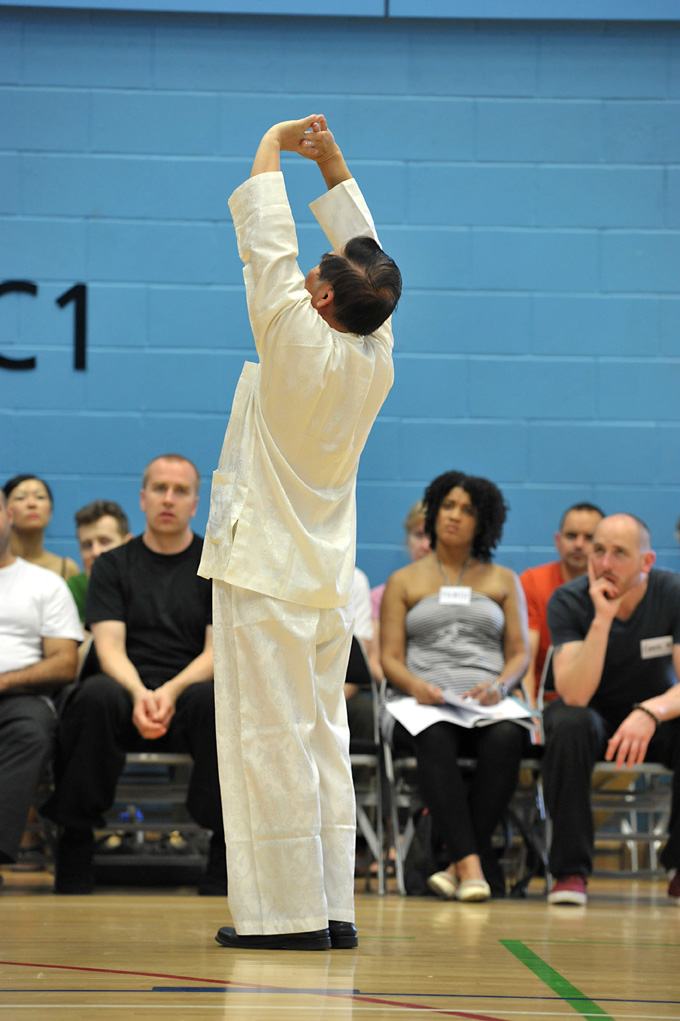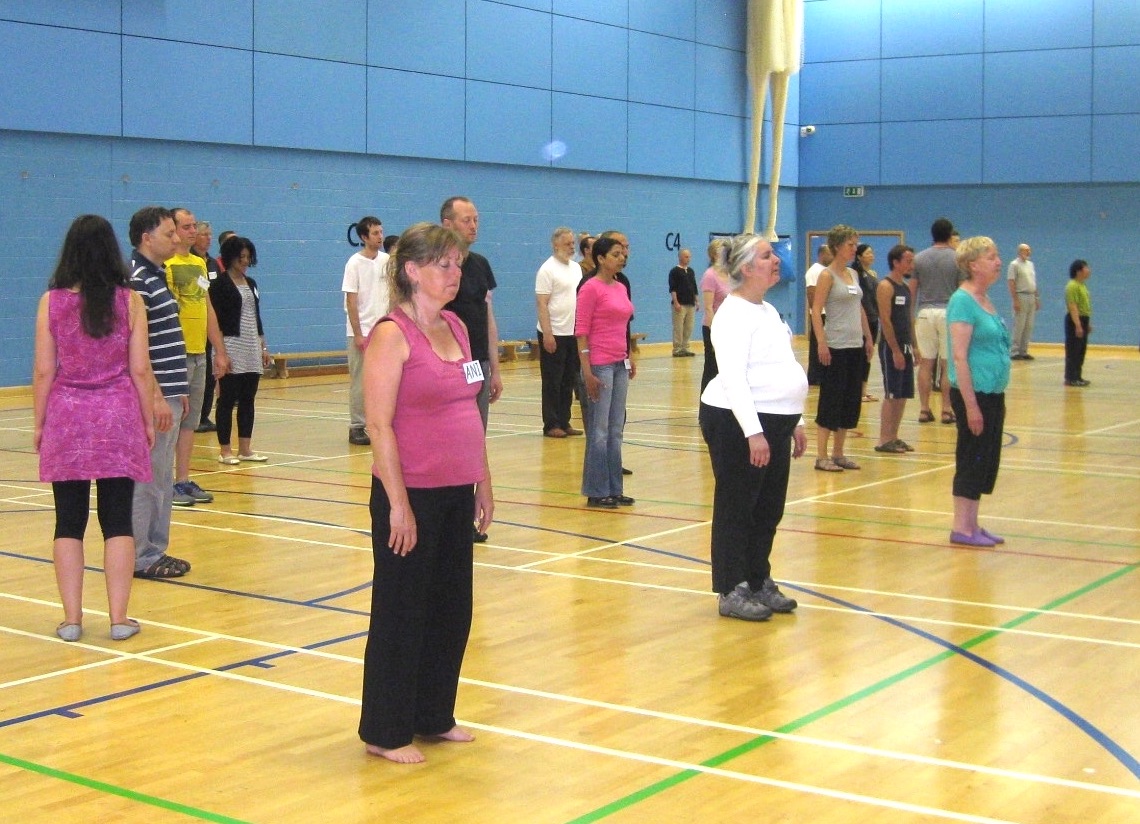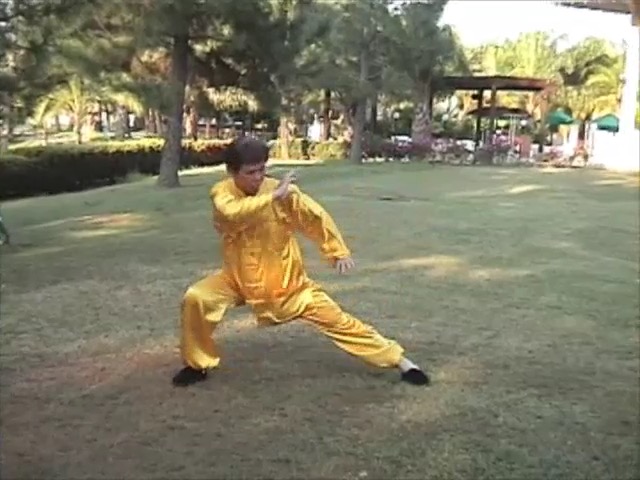SELECTION OF QUESTIONS AND ANSWERS
AUGUST 2018 PART 3

Lifting the Sky
Question 1
I purchased your book "The Art of Chi Kung" and have been practicing to cure an "incurable" illness with chi flow. I practice "Lifting the Sky" and "Carrying the Moon" 20 times each and then I go into induced chi flow. I find I always sway and find myself laughing, crying and many other movements.
— Kamlesh, USA
Answer
Practicing genuine, high-level chi kung can overcome any illness. Many people may find it hard to believe, but it is true. Many people had suffered from so-called incurable diseases like cancer, heart disorders, diabetes and arthritis, and recovered after practicing chi kung learnt from me. Indeed, as early as 1997, I was awarded "Chi Kung Master of the Year" because I helped many people overcome so-called incurable diseases.
"Lifting the Sky" and "Carrying the Moon" are two wonderful exercises. They have helped many people overcome so-called incurable diseases, and have attained good health, vitality and longevity.
It is an achievement that you could attain a chi flow, or energy flow, from the two exercises by learning from my book. Many people who have learned from living teachers cannot generate a chi flow. It is the chi flow, not the chi kung exercises, that overcomes illness and gives good health.
Chi flow clears negative emotions and energy blockage. The chi flow causes a practitioner to perform actions, which may sometimes be odd, which he (or she) does not normally do. That was why you found yourself laughing, crying and performing many movements. You laughed and cried because the chi flow flushed out repressed emotions. Excessive joy and sorrow can cause illness.
Question 2
Is it safe for me to carry on because I have learnt from the book that without a master it can be harmful? I am 60 years of age and am women. I only want to practice for my health and to stay young.
Answer
From your description, it looks like your are doing well in your chi kung practice. Chi kung can be practiced at any age, and by both male and female. Sixty is a good age to practice chi kung. It will keep you healthy and young, although some people feel old at fifty.
Carry on your practice gently and you can overcome your illness, stay young and have good health, vitality and longevity. By "gently" I mean keeping your chi kung at a relatively low level compared to the high level that our students will have when they learn from me personally.
Although it is relative low level, it is actually high level compared to many people who perform chi kung techniques and think that they practice chi kung, but actually they practice gentle physical exercise. A good analogy is that many people wrongly think that they practice Tai Chi Chuan when actually they only practice external Tai Chi forms. If you continue to practice chi kung at a relatively low level, it will help you to overcome illness and keep you young.
Even when a practitioner practices chi kung correctly, there is a risk that he may in future practice wrongly if he does not have a master to supervise him. If he keeps his practice at a relatively low level, the risk is not high. If he attempts more powerful chi kung, the risk is higher.
Low level chi kung is mainly for overcoming illness and attaining good health. Middle level chi kung is for martial arts, scholarship and peak performance in daily life. High level chi kung is for attaining spiritual fulfillment at the highest level, like expanding into the Cosmos.
I use the word "relatively" because many people think that if the kind of chi kung can overcome incurable illness, like cancer and heart disorders, it is high level. This is because many people have only a superficial understanding of chi kung, and many practitioners practice gentle physical exercise but they think it is chi kung.

When learning a high-level chi kung, like Cosmic Shower, it is necessary to learn it from a master
Question 3
Also can I practice "Lifting the Sky" and "Carrying the Moon" before or after a meal? How many times a day can I practice the above practices?
Answer
If you practice from a book, it is not advisable to practice chi kung before or after a meal. Leave about half an hour before and after a meal, and also before and after a shower.
Performing each exercise about 20 times, followed by a chi flow, is a good number. The training session is about half an hour. Practicing twice a day, one in the morning and the other time in the evening or at night, is recommended.
Students in our school, Shaolin Wahnam, needs less time. They practice for only about 10 minutes, once or twice a day. They perform "Lifting the Sky" or "Carrying the Moon" for about 10-15 repetitions each.
Question 4
I have financial problems and cannot afford to pay to learn from a master.
Answer
There is no price for good health, vitality and longevity. Some students borrow money to attend my courses, and they gained a lot of benefits.
Don't just learn from any teacher, but learn from a good teacher who has proven good results. Many chi kung teachers today teach chi kung techniques as gentle physical exercise, and they and their students do not know it. Generally, they are very nice people.

"Tame Tiger with a String of Beads" from Tiger-Crane
Question 5
Sigung, you know three Tiger-Crane Sets. Which one do you like most?
— Tobias, Austria
Answer
I first learned the 36-Patttern Tiger-Crane Set from Uncle Righteousness when I started learning Shaolin Kungfu in 1954. Then I learned the 108-Pattern Tiger-Crane Set from a master in Penang in the 1980s. This was the set transmitted by the great Shaolin master, Wong Fei Hoong. A few years later, in the late 1980s I learned the 72-Pattern Tiger-Crane Set from my Wing Choon Master, Sifu Choe Hoong Choy. This set was from the great female Shaolin grandmaster, Ng Mui.
Of the three sets, I like the 36-Pattern Tiger-Crane Set the most. Except the Shaolin greeting at the start and the end of the set, every pattern is different, and they are Tiger patterns or Crane patterns. Although the set is short, it has more Tiger patterns than the longer 108-Pattern Set. This is because some of the patterns in the longer set are repeated, whereas all the Tiger and the Crane patterns in the shorter set are different from one another. The longer 108-Pattern Set is actually a Lohan Kungfu set with Tiger and Crane patterns added.
Some important Tiger patterns, like "Catch Tiger in Mountain" and "Lazy Tiger Stretches Waist" are not found in the longer set. However, in the 108-Pattern Tiger-Crane Set practiced in Shaolin Wahnam, these patterns are included.
When I learned the 72-Pattern Tiger-Crane Set I was surprised that there were not many Tiger patterns. In fact, I thought the set did not look like a tiger-crane set. This was, of course, due to my ignorance and narrow exposure to kungfu.
However, the deadly "Single Leg Flying Crane" was performed in the 72-Pattern Set the way it was used in combat. I believed that early masters of the other two sets, hid the deadliness of this pattern, and subsequently it was lost.
All the three versions of the Tiger-Crane Set incorporate two of the greatest arts in kungfu, namely Tiger Claw and No-Shadow Kick. Many practitioners today, however, do not know these two kungfu arts. Modern practitioners merely perform the outward form of the sets.
I rarely used the No-Shadow Kick, but when I used it, it was always successful. A master, for example, was holding his groin in pain when I lightly kick at it. Another master was in total surprise when my tiger-tail kick gently landed on him.
Question 6
When students clear their rubbish, they may feel pain or fear due to the fear that is coming out. How do they regulate their practice so that they do not have adverse effects?
— Daniel, Austria
Answer
An effective way is to practice at a lower level so that they can attain similar results at a longer time. Suppose they clear their rubbish in two weeks, This may not be over-training yet, but the rapid cleansing of rubbish in a short time makes them uncomfortable.
By practicing at a lower level of performance, they can take a longer time, like 3 months, to clear the rubbish form their body. They will be more comfortable this way.
Let us take three scenarios. One, they leave the rubbish in their body. Two, they clear the rubbish from their body in 2 weeks. Three, they clear the rubbish from their body in 3 months.
The third scenario, i.e. clearing the rubbish in 3 months, is the best. When the rubbish is cleared, they will have good health, vitality and longevity, and they do not suffer discomfort of having the rubbish cleared too quickly.
Clearing the rubbish in 2 weeks is the second choice. They will be healthy, full of vitality and have longevity, but they suffer the discomfort of clearing the rubbish too fast.
Leaving the rubbish inside their body is the worst. Although they may not be clinically sick, their health, vitality and longevity as well as daily work performance will be affected unfavorably.

We can be in a chi kung state of mind, i.e. to be relaxed and focuses, for a long time
Question 7
Is entering into a chi kung state of mind the same as chi flow?
— Maite, Spain
Answer
No, they are different.
A "chi kung state of mind" is a new term in our modern world coined by the great chi kung master from China, Sifu Yan Xin. In the past, it was known as entering silence. In Taijiquan contact, it is entering Tao, and in Shaolin context, it is entering Zen. In Western terms it is entering a heightened level of consciousness.
A chi flow is a flow of vital energy, or life force, in a person which is usually manifested outwardly as external movement. The term was coined by me during my teaching when students moved about in their chi flow with outward involuntarily movements.
Later, as the term had become popular, I realized that chi could also flow vigorously inside a person's body without outward manifestation. Hence, we sometimes used the term to include this chi flow movement inside a person's body but without outward manifestation. But usually chi flow is manifested as outward movements. To make the meaning clearer I sometimes use the term "chi flow movements" to describe outward chi flow movements.
Entering into a chi kung state of mind is necessary to generate a chi flow, but entering into a chi kung state of mind does not necessary generate a chi flow. In other words, one may just enter into a chi kung state of mind without chi flow.
All great things were achieved when the persons involved were in a chi kung state of mind, though they might not have heard of the term, but they were all in a heightened level of consciousness. When Cervantes wrote Don Quixote, Michael Angelo created his sculpture, Mozart composed his masterpiece, they were in a chi kung state of mind. No matter what we do, when we enter into a chi kung state of mind, we will produce better results.
Question 8
Can a person remains in a chi kung state of mind for a long time, like for many hours?
Answer
Yes, he can. For those who have practiced genuine chi kung for some time, to be in a chi kung state of mind is the norm. In other words, normally they are relaxed and their mind is free from disturbing thoughts.
Whenever they practice chi kung, they are in a chi kung state of mind, for without this condition they just do not practice chi kung though they may perform chi kung techniques. If they have practiced chi kung daily for six months, they would have been in a chi kung state of mind daily for six months. By then, to be in a chi kung state of mind has become habitual, They can enter into a chi kung state of mind effortlessly.
Most people, however, are not in a chi kung state of mind. They are tensed and have myriad thoughts coming to them. Hence, they cannot have the best results in what they do.
LINKS
Selected Reading
- Chi Flow and Cash Flow
- History and Philosophy of the Tiger-Crane Set
- The Mechanics of Taijiquan in Overcoming Bigger, Stronger Opponents
- Entering into a Chi Kung State of Mind
- Across the Apalachain
